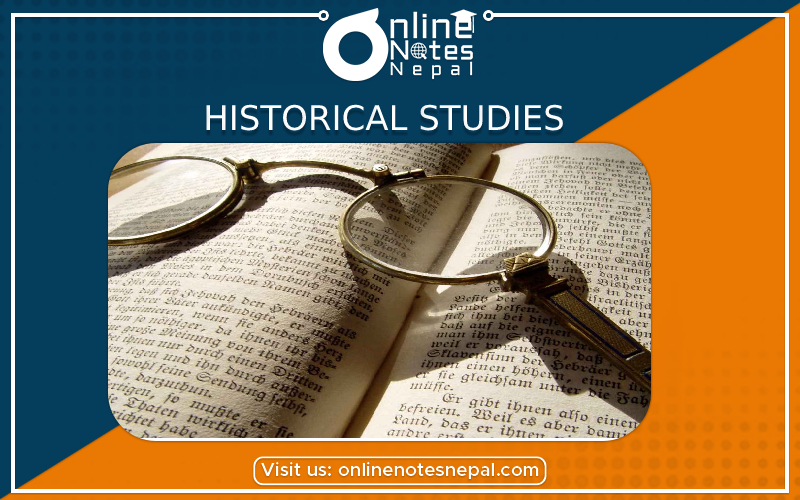Published by: Mandira
Published date: 18 Jan 2022

Historiography is a method of recording history as a research project. By studying history we learn about the past and prospect for the future. We are ignorant about many aspects of the past because of lack of records due to the loss of such records. History of a certain place in constructed with the utilization of various non-written sources like remains, buildings, artefacts, coins, statues, clothing and songs and written ones like records, diaries, newspapers and treaties. On the basis of their originality these are sources categorized into two as:
Primary sources take us closer to the events. They include the first-hand operation of the events happening in one's contemporary time. Using these sources as an eyewitness, historians record in special circumstances what they see, feel and experience. For the volume of their writing historians cannot rely more on these sources because they have very few opportunities, but on the secondary ones which are more commonly found.
Secondary sources include the remains, artefacts, records, diaries, journals, etc. These sources are less reliable because they may be biased, mistaken or fragmented; still very important to record the events of the distant past. History in prepared in this method after a comparative study of the indications given by these sources. So historians have to be critical of the evidence provided by these secondary sources.
And on the basis of their nature, these sources can be classified as follows:
| Sources Of History | ||
| Written Sources | Non-written Sources | Artefacts and other archeological objects |
|
|
|
|
Ancient Nepalese history in drawn from the legendary and religious sources. Nepal is believed to be sacred land of Hindus and Buddhists. It remained the birthplace of Gautam buddha and an area where various monks such as Manjushree spent their times. Many valuable sources of Nepalese history have been lost the history. Recorded history of Nepal begins later with Mandev's initiative for recording events in various inscriptions. 'An Account of the Kingdom of Nepal' prepared in 1793 by an Englishman William J. Kirkpatrick is considered in the first book of Nepalese history while Ambika Prasad Upadhaya wrote the first history book in Nepali in 1929. Baburam Acharya, known as 'itihas shiromani' ( a gem in history), contributed most to this field.
The following sources have been utilized in the preparation of Nepal's history.
1. Non-Written sources
a. Archaeological objects:
Inscriptions
Inscriptions are very important sources of the ancient and medieval history of Nepal. Inscriptions on stone, metals, and palm leaves are found in different parts of the country. King Mandeva's inscriptions in Changunarayan are oldest in Nepal. Inscriptions furnish important details about the contemporary political structures and events, motives of the rulers, their achievements, reforms, socioeconomic lifestyle.
Coins
Coins carry the names of respective rulers and some other details that give indications to their nature and power, economic condition, etc. King Mandeva's Mananka, the first coin of Nepal indicates the power and courage of the king as depicted by a lion. The coin also mentions 'Shree Bhogini', the name of his wife.
Artefacts
Various kinds of art objects such as paintings, images, temples and monasteries available in different parts of the country depict the contemporary society in one way or another. Magnificent buildings like Managriha, Kailashkut Bhawan and Bhadra Diwas and grand images like that of Budhanilkantha, Tribikram, Garud , as well as the temples like Nyatapola, Krishna Mandir and Taleju help us to decipher the political, economic, social, cultural and religious conditions of various periods.
b. Oral sources:
Historical information also passes from one generation to another through oral sources. Songs, legends, stories, veergathas tell us about the past events and characters. Similarly conversational statements from various dignitaries have remained important for recording our history.
2. Written sources
Genealogies and chronicles
Records showing family roots of kings, castes, classes etc along with the important events connected with these people are important sources of our history. Gopalraj, Bhanshawali, Gorakha Banshawali are among the important early chronic preserved in Nepal.
Epics
Skanda Puran, Swayambhu Puran, Himwatkhanda Nepal Mahatmya etc tell us about the origin and lifestyle of the Nepalese people in ancient times.
Historical documents
Documents of historical importance like gazette, treaties and court verdicts also help us to prepare our history. King Prithvi Narayan Shah's divine Counsels, Sugauli Treaty, Delhi comprise etc have also collected information.
Manuscripts
Handwritten documents by the Nepalese and foreigners about Nepal are also valuable sources.
Foreign accounts
Foreign missionaries, travellers, historians and anthropologists wrote experiences memoirs and information about Nepal. Indian diplomat Chanakya, Chinese traveller Yuan Chang and European missionaries such as Father Decideri, Father Dorvil, Father Grover as missionaries such as Father Decideri etc visited Nepal and recorded information which in a valuable source of Nepal's history.